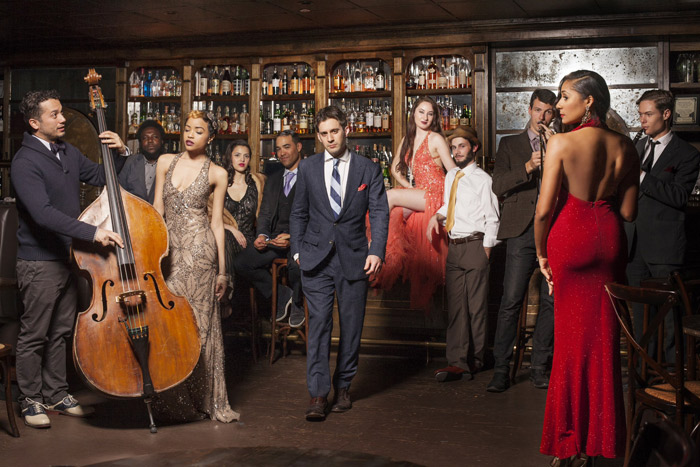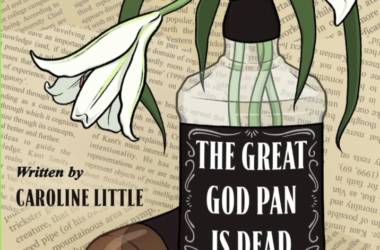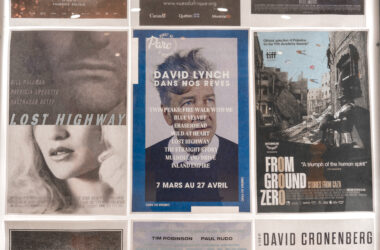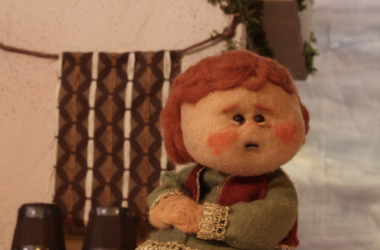As described in a 2015 interview with the group’s founder Scott Bradlee, the New York-based musical collective Postmodern Jukebox “puts pop music in a time machine.” Led by Scott Bradlee and joined by a host of talented performers, Postmodern Jukebox has gained popularity over the past few years by releasing weekly videos—their most popular has over 22 million views—in which they create vintage renditions of the same tunes heard on the radio. The Tribune sat down with Adam Kubota, longtime bassist with the group and old friend of Bradlee, to talk about the artistic process of turning pop songs into old-school jazz, soul, swing, and more.
Kubota and Bradlee met at the University of Hartford Hartt School, a performing arts conservatory in Connecticut. The pair started off playing at bars and small clubs in the early 2000s.
“Back then, the gigs weren’t so glamorous,” Kubota said. “Sometimes we got paid in pizza.”
Later on, Bradlee saw the advent of YouTube as a new medium to bring his ideas into the world, and Postmodern Jukebox was eventually born in 2011.
The gap between a Notorious B.I.G. hip-hop jam and a 1940s jazz number seems like a big leap to make, but for Postmodern Jukebox, that transition comes naturally.
“We’re all students of jazz, and love all the old music art forms, so it was pretty logical to take that step,” Kubota said.
The creative process starts with Bradlee’s ability to translate any song into a swing, jazz, or ragtime style. From there, it’s a collaboration with one of the many singers who work with the group—each of whom has a unique vocal approach. Often, Bradlee adds complexity to a simplistic pop song with more intricate harmonies.
“Sometimes the best ones are the simple ones, and they just sort of write themselves,” Kubota added.
The group’s latest release, The Essentials, is comprised of songs considered most essential to the Postmodern Jukebox universe. The collection spans a wide range of songs and styles, from a New Orleans dirge rendition of Radiohead’s “Creep,” to a Motown version of Justin Bieber’s “Sorry.” The love group’s love for their work is clear in every video, as it is in Kubota’s words when he describes the album.
“Every once in awhile, lightning strikes,” he says in reference to seemingly spontaneous moments of musical coherence. “The right performer, Scott’s arrangement, the right song, we capture the right vibe on the video, something really magical happens.”
The group’s work is inspired by a desire to bring the musical styles they love to a wider audience. Kubota hopes that those who enjoy the work of Postmodern Jukebox will dig deeper and find appreciation for the artists who inspired him, such as Duke Ellington and Miles Davis.
“It’s getting attention for older, classic art forms, such as jazz, such as doo-wop, Motown, tap dance, swing dancing,” Kubota said. “It’s a hook to get people who just happen to be on YouTube or Facebook checking out videos, to get interested in that.”
Having found his own success through YouTube, Kubota advocates for social media as a means of artistic expression.
“Give them some sort of visual image of who you are,” he advised student musicians. “It’s important to find your own voice, and to innovate.”
Indeed, Postmodern Jukebox can be considered a great musical innovator of the millennial generation, as they have found a way to pay tribute to the music of yesteryear while making it accessible to a younger crowd. With over two million YouTube subscribers and fans all over the world, it’s clear that their work is resonating with audiences.
“We’re building audiences for these classic art forms for the future,” Kubota said. “To me, there’s no bigger honour than bringing people to the art forms that I love and enjoy.”









